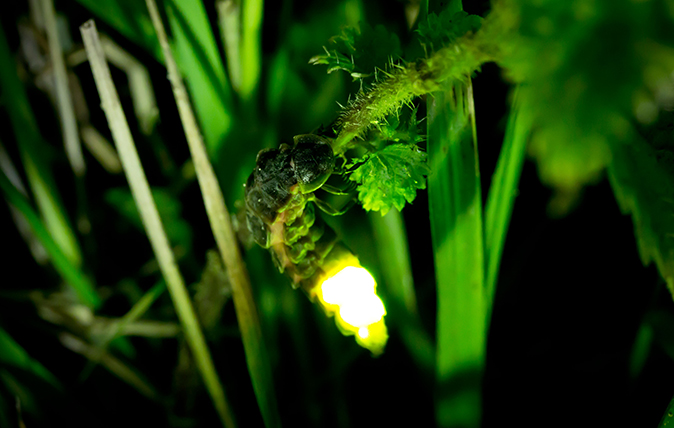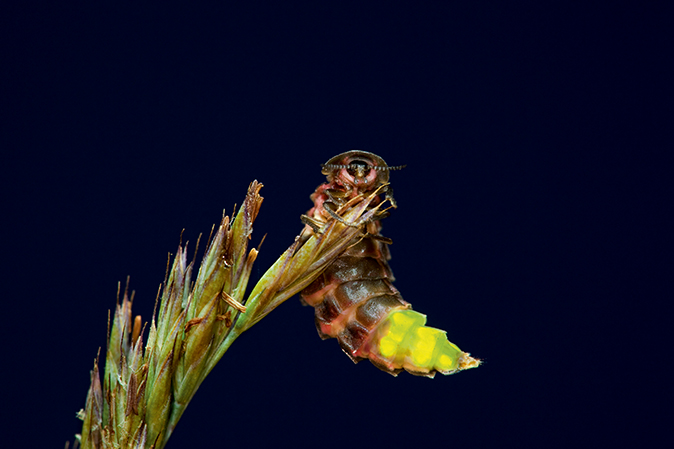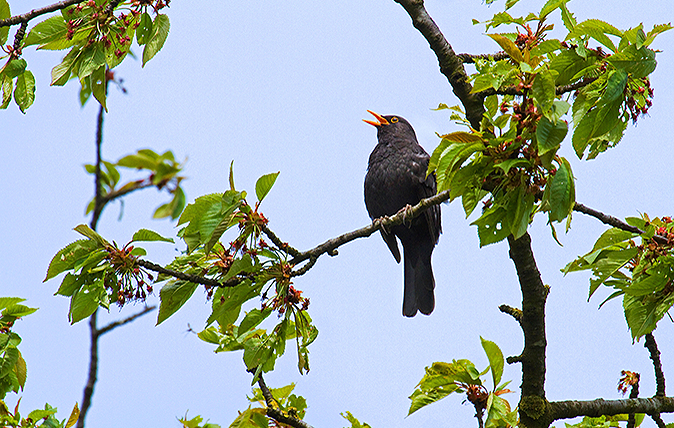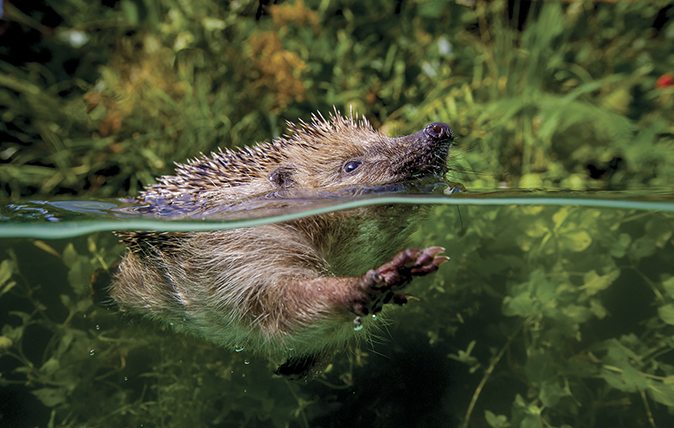Secrets of the glow-worm
From paralysing snails to lighting lamps, David Profumo shines a light on the life of a glow-worm, which isn’t actually a worm at all.


It isn’t a worm, it’s an insect – one famous for a chemical romance that brightens up our summer gloaming with a mysterious greenish glow, a beetle that was once the slang word for those of us humble scribes who toil by lamplight. A member of the small family that includes European fireflies (they aren’t flies, either, by the way), the glow-worm is widely distributed across Asia and up to the Arctic. Worldwide, it’s related to many bioluminescent bugs, which include Antipodean cave-dwelling fungus mites and even a subtropical marine species.
Populations of Lampyris noctiluca are hard to monitor, but, in Britain, appear patchy and are thought to be in decline. They favour a chalk or limestone habitat, with a penchant for churchyards, golf courses or abandoned railway cuttings, and are best sought out from mid June, when their goblin lights may be spotted on warm evenings. Folk wisdom reckoned the glow bard’s seasonal display heralded the start of the hay harvest and the naturalist Muffet (whose daughter sat down on that tuffet) specifies it was ‘a sign of the ripenesse of Barley, and the sowing of Millet’.
Its conspicuous adult stage is a mere final fraction of the glow-worm’s life cycle. Autumn eggs (the coatings of which themselves occasionally glow, too) hatch after 35 days and the resulting larva is a frankly unprepossessing creature resembling a woodlouse.
It nocturnally hunts snails that may be 20 times its own size. With sharp mandibles, it delivers a series of nips to the prey’s mantle and injects a paralysing neurotoxin from its intestine, which dissolves the living snail’s flesh. As this ghastly meal is in preparation, the larva often avoids the snaily mucus by perching atop its shell, before siphoning up the essence d’escargot through its sieved mouth, periodically cleaning its body with a multi-hooked organ stored within its tail.

The food, stored as fat and visible as a pale dorsal line along its soft, segmented body, causes it to swell and moult and, eventually, after two summers, it pupates, then emerges as an adult. Sexual dimorphism is pronounced: the larger female is apterous and looks like a coleopteran larva; the male is winged and possesses highly developed eyes. Neither feeds and they survive for only a few summer weeks, during which time the female stages one of Mother Nature’s most eye-catching spectacles.
‘From start to finish the Glow-worm’s life is one great orgy of light,’ wrote the great Jean-Henri Fabre, perhaps a touch over-enthusiastically. It is the virgins that shine, advertising their fecundity. The male flies keenly aloft in search of the little points of cold shine emitted by her abdomen.
These come from two luminous spots, which comprise a skin window over a layer of light-producing cells with a reflective cluster of uric-acid crystals. A chemical reaction using as a catalyst the complex enzyme luciferase, fed by oxygen through air tubes, creates oxyluciferin – a remarkably efficient, cold form of energy that generates a mere 2% of heat in the process (just imagine a lightbulb that could achieve this).
Sign up for the Country Life Newsletter
Exquisite houses, the beauty of Nature, and how to get the most from your life, straight to your inbox.
Unlike fireflies (which wink like a lighthouse and also shine on the wing), our female’s glowing call sign is constant, although it may give the impression of flashing as she swings her abdomen or the display is interrupted by foliage. The cruising male homes in on this disco light, which his multi-faceted eyes can detect hundreds of yards away, and he often has to take it in turns with other suitors as they scramble to mate with their stationary ladylove.
Unmated females may continue displaying hopefully for many nights on end. Once paired and settled, they cease to glow (a gloomy human analogy might be drawn here, I suppose) and, shortly after laying up to 100 yellowish eggs in the damp ground, they expire.
There are numerous myths about the brightness with which these creatures glow. One Victorian vicar claimed to read psalms by their light. They are said to have made emergency bicycle lamps and an ancient angling author recommended incorporating them into floats for night fishing. In Hardy’s brooding novel The Return of the Native, the tense dice-gambling scene between Venn and Wildeve is illuminated by 13 ominous glow-worms collected on a foxglove leaf.
Beloved of pastoralists and metaphysical poets, the shining ones came to suggest the transient and temporary: Webster uses them to denote the evanescence of glory, Marvell has his mower, Damon, anticipate a crepuscular liaison and Coleridge invented the term ‘love torch’. In A Dream, Blake transfigures the shine worm into ‘a watchman of the night’, offering guidance to a lost ant.
It was presumably this that Churchill had in mind when he likened himself to a glow-worm, for, even in dark times, there is always the hopeful prospect of that little glimpse of starshine in the grass.

The secrets of birdsong
For four months of the year, birds give us this incredible gift of the dawn chorus. But what’s behind it

The secret life of hedgehogs
With the hedgehog stirring from its winter slumber, David Profumo takes a closer look at the secret life of the

Why you should trim your hedge this weekend
Is now the time for a short back and sides?
Country Life is unlike any other magazine: the only glossy weekly on the newsstand and the only magazine that has been guest-edited by HRH The King not once, but twice. It is a celebration of modern rural life and all its diverse joys and pleasures — that was first published in Queen Victoria's Diamond Jubilee year. Our eclectic mixture of witty and informative content — from the most up-to-date property news and commentary and a coveted glimpse inside some of the UK's best houses and gardens, to gardening, the arts and interior design, written by experts in their field — still cannot be found in print or online, anywhere else.
-
 Two quick and easy seasonal asparagus recipes to try this Easter Weekend
Two quick and easy seasonal asparagus recipes to try this Easter WeekendAsparagus has royal roots — it was once a favourite of Madame de Pompadour.
By Melanie Johnson
-
 Sip tea and laugh at your neighbours in this seaside Norfolk home with a watchtower
Sip tea and laugh at your neighbours in this seaside Norfolk home with a watchtowerOn Cliff Hill in Gorleston, one home is taller than all the others. It could be yours.
By James Fisher